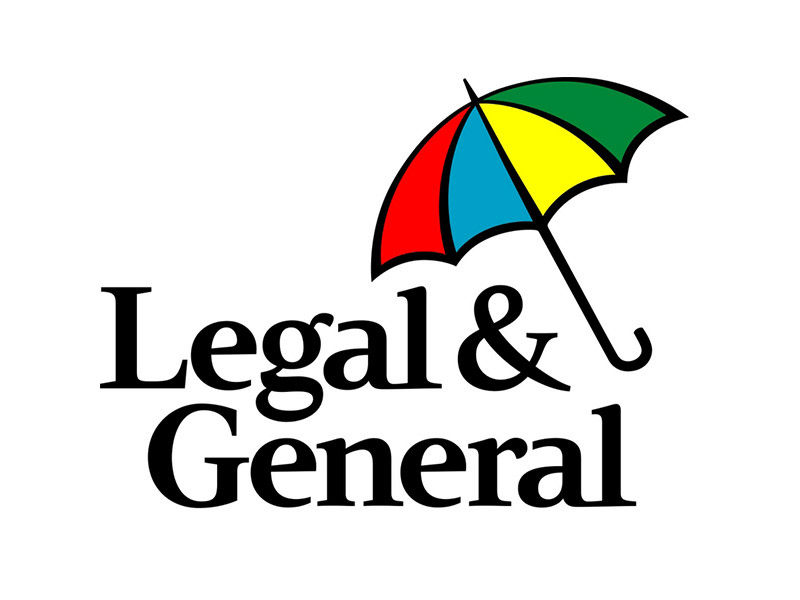Legal & General is one of the UK’s leading providers of passive funds
We think this fund is an excellent option for accessing the UK’s largest companies
It’s a simple, low-cost way to track the FTSE 100 Index
This fund features on our Wealth Shortlist of funds chosen by our analysts for their long-term performance potential
How it fits in a portfolio
The Legal & General UK 100 Index Trust invests in the 100 largest companies in the UK. While the FTSE 100 is a UK index, many of the companies also earn money from selling their goods and services overseas. Investors will therefore be indirectly investing into foreign economies as well as the UK.
An index tracker fund is one of the simplest ways to invest and we think this fund could be a great low-cost starting point for an investment portfolio aiming to deliver long-term growth. It could be a good addition to a more global portfolio or could diversify a portfolio focused on smaller companies or other investments such as bonds.
Manager
Legal & General has run index tracker funds for over 30 years and is one of the largest providers of index funds in the UK. That means it’s got the resources and expertise to track indices as closely as possible, and the scale to keep charges to a minimum.
Each index fund at Legal & General has a primary and secondary manager, though in practice the team as a whole helps to manage each fund. Jason Forster is responsible for UK fund management and is the primary manager for this fund. He previously worked on the firm’s index fund management systems before becoming a fund manager in 2002. Konstantins Golovnovs is the secondary manager for this fund. He joined Legal & General’s graduate scheme in 2010 and worked his way up to become a fund manager.
Process
This fund tracks the performance of the UK’s largest 100 companies, as measured by the FTSE 100 Index. It aims to invest in every company, and in proportion with each company’s weight in the index. This is known as full replication and should help the fund track its benchmark closely.
The fund currently has a bias towards the financials, consumer staples and healthcare sectors, which made up 24.3%, 16.8% and 13.0% of the fund respectively at the end of April 2025. The top 10 companies account for 45% of the fund so have a big impact on overall performance. This is determined by the underlying index the fund is tracking.
In any index tracker fund, factors like withholding taxes, dealing commissions and spreads, and the cost of running the fund all drag on performance. To reduce the tracking difference between the fund and the index, the team keep trading to a minimum which helps to reduce costs.
Legal & General cross trades shares internally across all its own funds when there’s an index rebalance. This provides a saving on Stamp Duty, which is a government tax that’s paid on the purchase of UK listed shares. Stamp Duty is one of the biggest contributors to the tracking difference between the fund and the index so trading efficiently like this helps to keep the fund’s performance close to the index.
Legal & General is a conservative tracker fund manager. For example, it doesn’t lend the investments in its index funds like some other companies do.
Culture
Legal & General has developed its passive fund range over the last three decades. The company manages £517bn in tracker funds, allowing it to offer a wide range of index-tracking options.
It’s built a team of experienced passive fund specialists and they’re innovative too. If an index doesn’t exist for a sector they’d like to track, they’ll often work with index providers to create a suitable index for them to track.
The team managing this fund work closely with various risk departments across the business. We believe this provides support and adds challenge where appropriate.
Employees are also encouraged to participate in Legal & General’s share save scheme which should encourage them to be more engaged with the growth of the company. In addition, a portion of fund managers’ bonuses are invested into the funds they manage. By doing this, their interests are further aligned with the investors in the fund.
ESG Integration
Legal & General Investment Management (LGIM) is predominantly a passive investor, but we are impressed with the extent to which they have woven Environmental, Social and Governance (ESG) ESG into its culture. Being a mostly passive fund house hasn’t stopped them being innovative when it comes to ESG. In May 2019, the firm launched its ‘Future World’ range of funds, though this fund isn’t part of that range.
The Future World funds track indices that increase investments in companies that score well on a variety of ESG criteria – from the level of carbon emissions generated, to the number of women on the board and the quality of disclosure on executive pay. They also reduce exposure to companies that score poorly on these measures. The funds also adopt a decarbonisation pathway. This means they’re managed to achieve at least a 7% reduction in carbon emissions per year until 2050.
In 2019, LGIM established its Global Research and Engagement Platform, which brings together representatives from the investment and stewardship teams, in order to unify their engagement efforts. Engagement is conducted in line with the firm’s comprehensive engagement policy. A detailed description of the firm’s engagement and voting activity (including case studies) is available in its annual Active Ownership report.
LGIM’s Investment Stewardship team is responsible for exercising voting rights globally, both for LGIM’s active and index funds. Voting decisions are publicly available through a tool which allows a user to search for any company to find out how LGIM voted, and a detailed rationale is provided for votes against management and abstentions.
As of the end of May 2025, this fund invests 20.07% in companies involved with the extraction of oil, gas or coal. This could leave the fund vulnerable to fluctuations in commodity prices, regulatory changes aimed at reducing carbon emissions and potential shifts in consumer preferences towards sustainable alternatives. However, the fund’s composition represents the exposure of the FTSE 100 Index meaning the team has no control over the companies included in this passive fund.
Cost
The fund has an ongoing annual fund charge of 0.10%, but we've secured HL clients an ongoing saving of 0.04%. This means you pay a net ongoing charge of 0.06%. We believe this is good value when compared with other FTSE 100 tracker funds. Our platform charge of up to 0.45% per year also applies, except in the HL Junior ISA, where no platform fee applies.
Performance
This fund has tracked the FTSE 100 Index closely over the long term. In the last 10 years, the fund has gained 80.73%* versus 83.02% for the index. As is typical of tracker funds, it’s lagged the benchmark because of the costs involved in running the fund. However, the techniques used by the managers have helped to keep performance tight to the index. Remember, past performance isn’t a guide to future returns.
With inflation closer to the 2% target, the Bank of England (BoE) lowered interest rates in August 2024 after holding rates at a 16 year high for a full year. Although the BoE has continued to cut rates, it’s taken a gradual approach as inflation remains above target.
Over the past 12 months, the fund has returned 10.14% compared to 10.20% for the benchmark. The financials sector contributed significantly to the fund’s overall returns as UK banks performed strongly. Higher interest rates have benefited banks as they increase the cost of borrowing, which boosts profits. Companies in the industrials and consumer staples sectors also performed well.
Whereas the energy sector was a big detractor from performance over the year as the profits of energy companies have been impacted by lower oil prices. The basic materials sector also contributed negatively to performance due to a weak period for commodity markets.
The UK stock market didn’t perform as well as most major markets in 2024. But European markets including the UK have performed better than other markets so far in 2025. This is due to expectations for increased defence spending in Europe, concerns over growth in the US and the potential impact of Trump’s proposed tariffs on other regions, particularly Asia.
Given Legal & General’s size, experience and expertise running index tracker funds, we expect the fund to continue to track the index closely in the future, though there are no guarantees.
Annual percentage growth
May 20 – May 21 | May 21 – May 22 | May 22 – May 23 | May 23 – May 24 | May 24 – May 25 | |
|---|---|---|---|---|---|
Legal & General UK 100 Index | 18.17% | 12.05% | 2.24% | 14.32% | 10.14% |
FTSE 100 Index | 18.32% | 12.24% | 2.35% | 14.50% | 10.20% |


